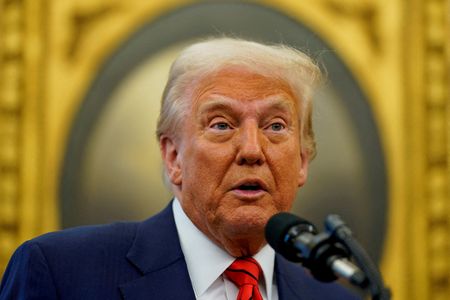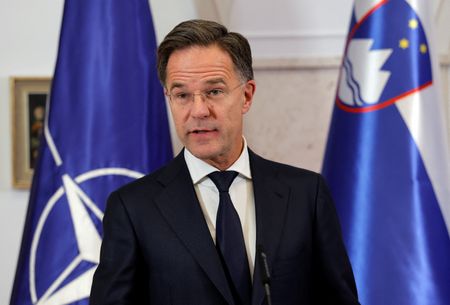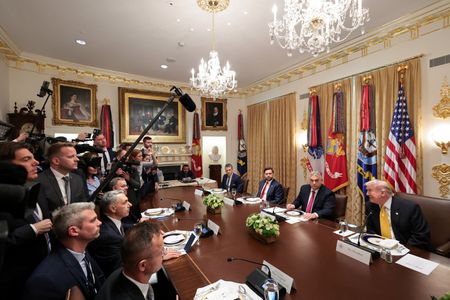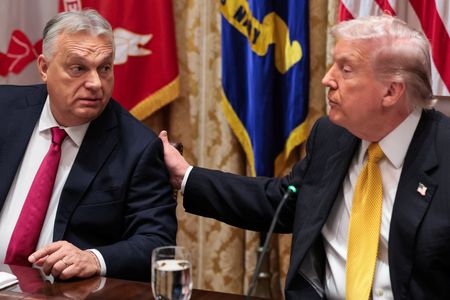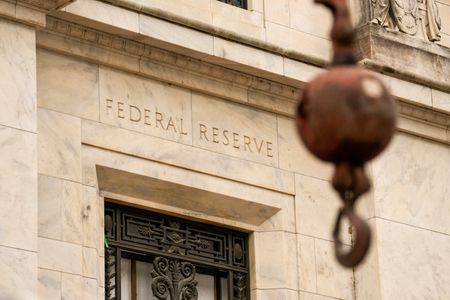A look at the day ahead in European and global markets from Wayne Cole.
The week started with a now all-too common bang as President Trump used a media scrum on Air Force One to announce 25% tariffs on steel and aluminium imports into the U.S., with a promise of yet more reciprocal tariffs on Tuesday or Wednesday.
At the same time, China’s new retaliatory tariffs on the U.S. came into effect and German Chancellor Scholz said the EU was ready to respond to levies “within an hour”.
Investors sold the usual suspects with the Australian dollar and euro both slipping early, though they have since pared the losses. Wall Street futures also started lower but didn’t stay down for long: They are now up around 0.3%. European futures are also holding their nerve for now.
Maybe tariffs are losing their shock value, or markets suspect it is all a bargaining bluff and Trump will quickly reverse course. Some analysts argue that Trump is very sensitive to moves on Wall Street and will cave if markets truly tank – another version of the Fed Put.
Then again, markets would have to tank first and the current stability in stocks would surely just make him bolder.
Trump also made some, frankly confusing, comments on the Treasury market suggesting the U.S. debt was not as big as assumed because some of it was “fraudulent”. That rang some alarm bells as Trump has in the past floated the idea of reneging on the U.S. debt, essentially defaulting.
Such a move would be a global financial catastrophe, so analysts assume he would never do it. Yet just a whiff of a hint of a suggestion of such a risk could cause mayhem.
No doubt all these questions will be put to Fed Chair Powell when he testifies before Congress on Tuesday and Wednesday and he will have to be at his diplomatic best to answer without riling the White House.
Wednesday’s appearance will also come right after January consumer price data are released, allowing for a real-time reaction from the Fed itself.
As an aside, gold hit another all-time high helped by speculation that Trump could slap tariffs on the metal, an odd move given the popularity among some conservative U.S. commentators of what John Maynard Keynes once called a “barbarous relic”.
The tariff talk has sparked a rush for the physical metal in London, Switzerland and Asia to ship to the U.S. ahead of any new levy. Apparently demand has been so great the Bank of England has been unable to keep up, partly due to its antiquated method of releasing its bullion stores, and that’s causing a painful crunch in the market. It gives “liquid gold” a whole new meaning.
Key developments that could influence markets on Monday:
– Appearances by ECB President Christine Lagarde and ECB Board Member Isabel Schnabel, BoE policymaker Catherine Mann,
– EU Sentix investor confidence survey
– NY Fed Inflation Expectations
(By Wayne Cole; Editing by Edmund Klamann)

